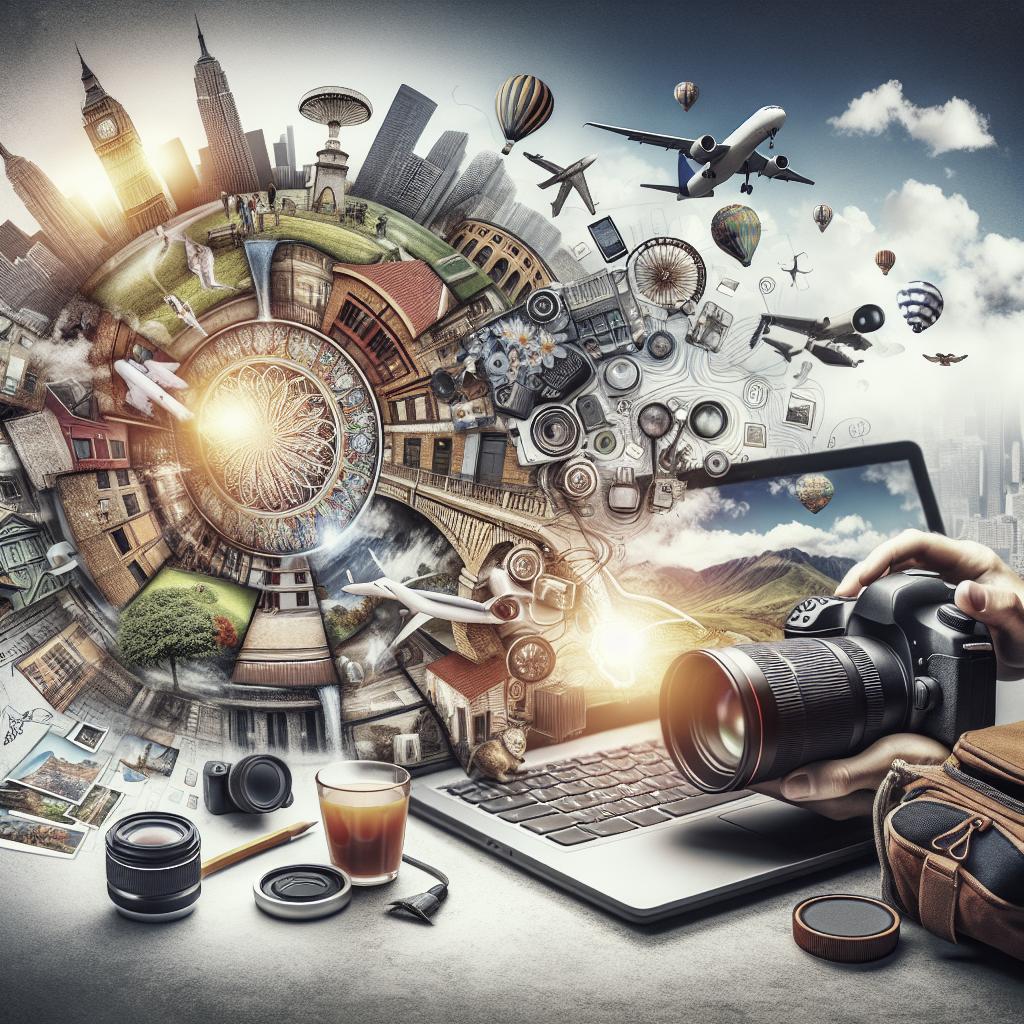“`html
Tips for Travel Photography
Travel photography has a unique way of capturing the essence of the places one visits as well as the culture, people, and scenery that make each destination distinct. It requires a blend of skill, artistry, and technical expertise. In this blog post, we will explore practical tips for enhancing your travel photography, focusing on light and color, composition, and essential gear. Whether you’re a beginner or an experienced photographer, these insights will help you capture moments that tell a compelling story and add an artistic edge to your holiday snaps. Let’s embark on a journey of visual exploration that goes beyond typical travel pictures.
A Guide to Travel Photography
Diving into the world of travel photography can be both exciting and daunting. At its core, travel photography seeks to convey an authentic experience through the lens. It’s about telling a story and capturing moments that evoke emotion and curiosity. To be successful, it’s crucial to understand the various elements that contribute to an impactful photograph.
Regardless of your destination, whether it’s bustling city streets, tranquil countryside, or exotic locales, considering aspects like lighting, composition, and equipment can significantly enhance your photographic results. By mastering these elements, photographers can elevate their shots, turning ordinary pictures into extraordinary narratives that captivate viewers.
Light and Color in Travel Photography
Weather and Light Conditions
The time of day and weather conditions can dramatically alter the mood of your photographs. Morning light, known as the ‘golden hour,’ offers a soft, warm hue that adds a magical touch to landscapes. Similarly, the light within the hour leading up to sunset can create stunning contrasts and long shadows that emphasize textures.
Overcast days might seem uninspiring, but the diffused light can reduce harsh shadows and bring out colors in a subtle way. Rain can add a contemplative, moody atmosphere, while snow offers a fresh, clean canvas to work with. Always be prepared to adapt your plans depending on the weather, as unexpected conditions can lead to unique photo opportunities.
Directions of Light
Understanding the direction of light is pivotal in achieving the desired effect in your photographs. Side lighting can add depth and drama to your images by highlighting textures and creating shadows. This is particularly useful in landscape photography where the interplay of light and shadow can add layers to a scene.
In portrait photography, front lighting can be flattering, producing even skin tones and illuminating your subject. On the other hand, backlighting can create a stunning silhouette effect if executed well, while also allowing the opportunity to play creatively with reflections and flares.
Color
Color can significantly enhance the emotional impact of your travel photos. Vibrant colors can convey joy and vitality, while muted tones might evoke a sense of calm or nostalgia. Understanding basic color theory can assist you in composing images where colors complement or contrast with each other effectively.
Consider framing elements that add a splash of color or focus on local architecture or attire that encapsulates the essence of the place. Also, be mindful about post-processing techniques. Adjusting saturation and contrast can emphasize the color palette but should be done carefully to maintain the authenticity of the scene.
Framing / Composition in Travel Photography
Be Clear About Your Subject
One of the key aspects of composition is establishing a clear subject. Determine what you want the focal point of your image to be before you take the shot. This could be a stunning landmark, a local delicacy, or even an interesting face in a bustling market.
Utilize the rule of thirds by placing your subject off-center to create a more dynamic image. Leading lines, such as roads or rivers, can also guide the viewer’s eye towards the focal point, adding to the compositional strength. Remember, a well-composed photograph invites exploration and holds attention longer.
Experiment with different angles and perspectives to highlight the subject most effectively. Sometimes changing your vantage point, whether it be getting low to the ground or shooting from a high elevation, can drastically change how the subject is perceived, making it stand out more in the composition.
Travel Photography Gear Essentials – What to Bring
Choosing the right equipment is crucial for travel photography. While it’s easy to amass a collection of gear, prioritizing versatility and weight is important. A reliable DSLR or mirrorless camera with a versatile zoom lens is an excellent starting point. This setup provides flexibility for wide-angle landscapes and zoomed-in portraits or street scenes.
Beyond your primary camera, a compact tripod can be invaluable for capturing long-exposure shots or steady frames in low-light conditions. Don’t underestimate the power of a smartphone; modern phone cameras can produce exceptional images, especially when traveling light is a priority.
Other essential gear includes extra batteries, memory cards, and lens cleaning supplies. Depending on your location, consider protective gear such as rain covers or a sturdy camera bag to safeguard your equipment. Proper planning ensures that you’re poised to capture exceptional images, regardless of the setting.
Future Prospects
| Aspect | Content Summary |
|---|---|
| A Guide to Travel Photography | Understanding fundamental elements like lighting, composition, and gear improves storytelling through photography. |
| Light and Color | Utilizes weather, directional light, and color to set mood and enhance photos. |
| Framing / Composition | Emphasizes importance of clear subjects, rule of thirds, and creative angles. |
| Gear Essentials | Highlights versatile camera equipment and additional gear to enhance travel photography. |
“`

